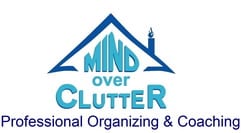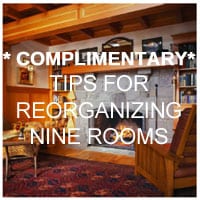10 Steps to an organized kitchen
It can take between 5 -10 hours to completely reorganize a kitchen depending on the size of your kitchen and how much is in each storage space, cupboard, drawer and pantry. Break the job into manageable tasks depending on the time you have to spend. Start by decluttering each drawer and cupboard then begin the reorganizing process described here.
1. Set a day and time
Make an appointment with yourself and don’t cancel it. Leaving this task until you have time will never get completed.

2. Set a goal or 2 for your organizing
It will help you decide what to keep and what to give away. You may decide you want to reduce what is in your kitchen by 50% so you know you need to give away half of your stuff. You might want to be able to find things more easily so things need to be put in zones. You might want to have a better flow to your kitchen so people don’t need to use the same space and keep bumping into each other. To solve this problem, you might need to rearrange where things are located. Decide what your goals are for your project. Write them down.
3. Declutter your counters
Find a home for things that are piled on the counter, and decide if you need them to be stored in the kitchen. Items that are used infrequently can be stored in a basement or garage. Once your counters are clear it helps you psychologically to keep going because you can see progress. Also, it gives you space for the next steps in organizing your kitchen.

4. Declutter your cupboards
These steps 4, 5 and 6 will need a lot of time. Make sure to set a day and time for this task. Take everything out of all the cupboards. Group items that have a like use or purpose together. Food preparation items, baking items, dishes and glasses, appliances, food, spices etc.
5. Part with items you don’t need, love or use.
For this step, you need some boxes or bags. Don’t leave the kitchen to take things to other places you might not get back to finishing the job.
- One container is for things you can donate.
- A second container is for things that go to another room. Perhaps you keep some items in your garage or basement.
- A third box might be for things to return to other people.
- A fourth box might be for undecided. You can’t make up your mind right now and you don’t want to get stalled on deciding about the item. Leave that decision for later.
You have grouped items in step 4 and in step 5 you have decided what you can part with. Look again at how many things you have in each group and decide if you need, love and use them. What can you let go of?
6. Organize your kitchen into zones
Divide your kitchen into zones/centres that are appropriate for your family. Here are some suggestions.
- The meal preparation centre is the home for items needed to prepare and cook food – cutting board, knives, bowls, graters, pots, pans, casserole dishes, strainer, etc.
- The drink centre contains coffee, tea, hot chocolate, drink mixes, cups, glasses, sugar/sweetener, coffee maker, kettle, teapot, etc.
- The dish centre contains dishes and cutlery and should be near the dishwasher for fast and easy unloading. Aim to store items at an age-appropriate height so children can participate without needing assistance.
- The baking centre contains food items and utensils specifically for baking – spices, flour, nuts, chocolate chips, spatulas, cookie sheets, casserole dishes, pie plates, cake pans, rolling pin, flour sifter
- Establish a recycling/garbage centre for easy collection.
- The desk/paperwork centre, located near the telephone, charging center or computer, holds recipe books, notepaper, and a whiteboard or bulletin board.
- The linen center contains small cloth items you use regularly, pot holders, tea towels, dishcloths
- The paper products center holds plastic wrap, tin foil, parchment paper, napkins, plastic bags
- The children’s zone contains dishes and snacks so children can get their things with less help.
- The cleaning center should be located so it is out of reach of small children and pets.
Decide where to locate each of these zones in your kitchen. Write down your zones and where each one is located. Plan it out and work your plan.
From step 5 you can take each of your groups of items and place them in the correct area/zone/center in the kitchen.

7. The miscellaneous drawer
Every kitchen needs one miscellaneous drawer. It contains small tools and items to which you need quick access in the kitchen – screwdriver, tape, twist ties, scissors, pen, marker, etc. Don’t let it become the dumping ground for items you don’t want to organize or two or three drawers.
8. Organize your fridge
Divide your fridge into zones. Have a place for fruit, vegetables, drinks, cheese, meat, bottles, condiments and leftovers. If you have zones it is easier to prepare your shopping list. When you have zones, it is easier to see what food needs to be used before it goes bad. Save yourself money by organizing your fridge and reducing food waste.

9. Give your new kitchen a try
If needed, rearrange items so that they are easy to get at and use. Don’t get stuck thinking you can’t change things to a better place.
10. Donate
Any food you no longer need can be donated to your local food bank. Make sure it is not expired. Donate any kitchen items you no longer need to a local charity.
Want some support or guidance for your project?
There are 3 ways I can assist you.
- Book a virtual organizing appointment and we can do it together. I’ll be in your kitchen with you watching you through your computer, phone or tablet and helping you with the process. https://mindoverclutter.ca/virtual-organizing-services/
- If you’re having trouble making changes to your kitchen book a coaching appointment to discuss how to reduce your fears with making changes. https://mindoverclutter.as.me/organizingsession
- If you live in the Niagara Region of Ontario, Canada book an in person session for us to work together in your kitchen.

Julie Stobbe is a Trained Professional Organizer and Lifestyle Organizing Coach who brings happiness to homes and organization to offices, coaching you virtually using Zoom. She has been working with clients since 2006 to provide customized organizing solutions to suit their individual needs and situations. She uses her love of teaching to reduce clutter, in your home, office, mind and time. She guides and supports you to be accountable for your time, to complete projects and to reach your goals. If you’re in a difficult transition Julie can coach you to break-free of emotional clutter constraining you from living life on your terms. Online courses are available to help instruct, coach and support your organizing projects. Get started by downloading Tips for Reorganizing 9 Rooms.
Contact her at julie@mindoverclutter.ca
Twitter – Facebook – Facebook group Organizing Mind and Space



Thank you Julie: My kitchen is due for a good organizing. Your tips, as always, are inspiring.
You’re welcome. Kitchens can be overwhelming. It can help to start by decluttering one cupboard at a time. Next start reorganizing items that should be grouped together.